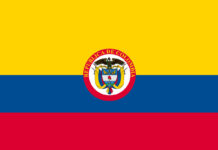KARACHI: WWF-Pakistan (WWF-P) and United Marine Agencies (UMA) on Saturday organised a golf tournament at the Karachi Golf Club to raise funds for protection of snow leopard.
Eighteen teams consisting of 70 players took part in the event.
“The snow leopard, also called the phantom of the Himalayas, is an icon of Pakistan’s high mountains. Climate change, deforestation and human encroachments among other threats, are escalating habitat degradation for this enigmatic big cat in the country,” said Hammad Naqi Khan, WWF-P director general, at the ceremony. He emphasised that different organisations should come forward and partner with WWF-P to protect other endangered and endemic species of the country. He said that in order to increase the snow leopard population, a robust conservation strategy should be in place.
“There must be transboundary cooperation among the countries which share borders as well as snow leopard populations,” he added.
Meanwhile, Sohail Shams, UMA CEO, said the snow leopard is a majestic creature and a national treasure for Pakistan. He also shared that the animal is indigenous to the country and is a symbol of the hidden treasures that Pakistan possesses. “Environmental degradation is a key issue that the world in general and Pakistan in particular, faces right now, and we would like to unite in order to save our beautiful country and planet,” he added.
The snow leopard is listed as endangered according to the International Union for Conservation of Nature red list of threatened species. Its vast home range sits across 12 countries including Pakistan, which hosts the third largest population of the species globally.
A study conducted by WWF-P, under the Asia High Mountain Project, shows that warmer temperatures are shrinking the snow leopard habitat, pushing it towards extinction every day. Though the snow leopard was reported to likely be resilient to climate change and its impacts, the remaining small and fragmented population of the species, estimated to be 200 to 400 individuals in Pakistan, makes it vulnerable to changing climatic patterns in different areas. The study added that the snowline during the last 25 years had shifted upward by about one kilometer. This means warmer temperatures are melting glaciers and increasing droughts resulting in herders staying an additional 20 to 25 days in the area. According to the report, there was now a greater chance of herders and livestock encountering a snow leopard.















